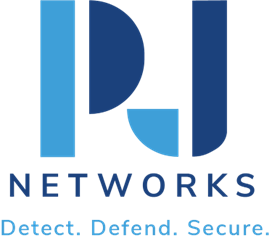Securing the Internet of Things: Protecting IoT Devices
Now that businesses are more and more providing internet of things (IoT) devices as a part of their operations, ensuring IoT security has by no means been greater crucial. However, the downside to all of this hyper-connected technology is that it brings with it security risks. This blog takes a deep dive into the various strategies and best practices used to protect IoT devices in an enterprise environment, thereby providing strong IoT security as well as IoT threat protection.
IoT Security: Any Good? The Current State of IoT Security
Internet of Things (IoT) is a technology-based ecosystem, and the large amount of IoT devices that occupy space in industrial, commercial, and consumer environments have expanded the range that can be attacked by cybercriminals. Now, for IoT (Internet of Things) deployments this could mean a whole bunch of devices interconnected, and each of them posing a potential entry point! There are no uniform security standards for how IoT devices can communicate with one another and hackers take advantage of many of these security vulnerabilities. These risks are exacerbated by issues such as weak access controls, poor encryption, and subpar patch management.
Poor and insecure IoT, may lead to things like data breach, operational disruption, or financial loss. Further, when IoT devices are compromised they can be used for volumetric attacks like Distributed Denial of Service (DDoS) across multiple endpoints which can quickly hinder the business reputation and bottom line.
What Threats are Looming Over IoT Devices?
A few common threats which need to be considered when we talk about IoT threat protection are:
- Botnets: Even more IoT devices have been used as part of botnets, which are networks of compromised devices that attackers then remotely control to perform large-scale attacks. Industrial IoT security in specific, is under even greater threat from these.
- Malware: Attackers can write specific malicious code designed to compromise these devices, and this can be used to cause threats (can log passwords, track activity or restore a DDOS botnet).
- Data Breaches: IoT devices frequently gather and transmit sensitive data, and breaches can lead to personal, financial or confidential business information leaks.
- Unauthorized Access: Inexpensive passwords and single clickless get entry to leave devices uncovered, enabling attackers to immediately manipulate the capabilities of devices or use them as protecting a backing up to infiltrate additional networks.
Security Best Practices for IoT
Implement the following best practices to secure IoT environments effectively:
Organizations should conduct rigorous risk assessments that identify the different classes of vulnerabilities and threats specific to their IoT deployments before they deploy devices. Knowing the threat landscape is essential in order to build effective IoT security strategies.
Use Strong Authentication Procedures
Use strong authentication procedures for all IoT devices. Use MFA: Single passwords are no longer enough; enable multi-factor authentication (MFA), whereby multiple methods of confirming the user identity are used to allow only approved users to gain device access.
Keep Devices Updated and Patched
Manufacturers often release updates to remediate vulnerabilities as they are found. Develop a regular patching cadence that all IoT devices can adhere to in order to protect against common vulnerabilities.
Network Segmentation
These devices should be placed in separate network segments, different from business operations and sensitive repository of data to reduce potential on unauthorized access and lateral movement within networks.
Utilize Encryption
Although decrypting devices tells a reader a little about how it is behaving, the main use is to sit in line between IoT devices and the software on a gateway, see how encryption works in each situation, store any shared secrets, send all data over secure channels (by wrapping or encrypting with keys you know.) Also, you secure the data by encrypting the data at rest as well and reduce insecure production of decrypted data.
Continuous Monitoring and Detection of Threats
Continuous monitoring: Lose the reactive security posture and start implementing continuous monitoring to identify suspicious activity and potential threats earlier. An automated alert systems could assist rapid security incident resolution.
Tools to Secure IoT
Along with above best practices, some tools and solutions that could help to improve the Internet of Things Security are following:
- IoT Security Platforms: These all-encompassing platforms offer centralized management, monitoring and security for IoT devices. Typical offerings detail threat detection, vulnerability management, and policy enforcement that have been customized to fit industrial IoT security requirements.
- Device Authentication Protocols: Use secure device authentication and implement PKI Public Key Infrastructure.
- Security Analytics: Use security analytics to derive insights from the behavior of IoT devices enabling anomaly detection, which helps in identifying attacks.
- Firewall & IDS/IPS (Intrusion Detection/Prevention Systems): Utilize firewalls and IDS/IPS to protect IoT traffic over the network, preventing unauthorized access or detecting/preventing abnormal behavior!
- Secure Firmware: Build security into the firmware to make devices harder for an attacker to manipulate, or install malicious code without detection.
By following these measures, enterprises may well improve to a considerable extent in protecting against IoT threats, ensuring the respectability of data and networks associated with IoT and maintaining confidentiality.
Conclusion
IoT devices are a dual-edged sword when it comes to their growth in business environments. However, by understanding the security risks associated with IoT, identifying common threats and this set of best practices for IoT, organizations can protect their investments in the Internet of Things! Proactive management of IoT security leads to prevention from potential threats and helps in building confidence by differentiation that further investing into the evolution & integration of their business processes tied to Internet of Things. By building comprehensive industrial IoT security solutions, you will virtually stay ahead of the threats, guaranteeing your IoT ecosystem remains at high integrity and reliability.
